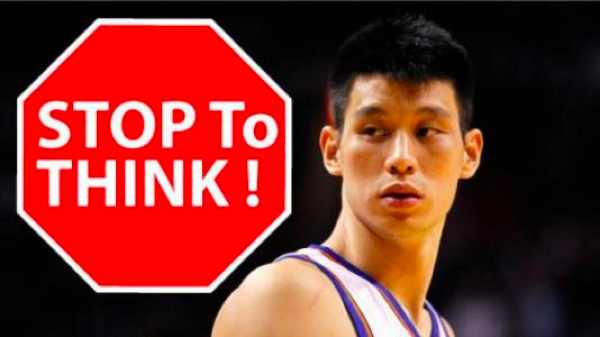
Our internal e-mail lists have us discussing all kinds of stuff: Asian American identity, representation in the media, the experiences of activism in an academia setting and its progression as we transition to the working, adult world. And sometimes, we talk about AAJA’s Media Advisory for Jeremy Lin – undoubtedly as a response to ESPN’s “Chink in the Armor” fiasco – and the backlash from said media advisory.
Joz: AAJA is releasing this Media Advisory for the benefit of journalists covering Jeremy Lin to help remind them of the relevance and context regarding coverage of race. Disclosure: I’m on the National Advisory Board of AAJA, but not on the MediaWatch team.
John: My favorite part: “Cinderella-story angles should not place Lin in a dress.”
Joz: We all know how people can get in comments … [but the guidelines] were posted to a sports site and — no surprise here — comments about it were venomous and racist.
Koji: [And it was] only a matter of time before Michelle Malkin had something to say.
Moye: Can’t we pretend like she doesn’t exist?
William: Perhaps I have it all wrong, but I wonder if by attempting to protect Jeremy Lin through this guideline, it may in fact spark the opposite effect. Whilst I understand the need to educate and stop people using Asian Americans as a punching bag, it is very easy because of the current mindset of people to dismiss such attempts as purely playing the race card. It also doesn’t help that Michelle Malkin is of asian descent. I suggest perhaps, in a very bold move, to release a comparison between pejoratives of ethnic groups and so show why references to “Chink”, “Eyes” and “Fortune Cookies” would be offensive. My personal opinion is that the world will always always be prejudicial and the best way of handling crap is for Jeremy Lin himself to confront it head-on, and challenge it on the spot, not for anyone else to try and protect him 🙂
Moye: Can you imagine the uproar if the AAJA released a comparison chart between different racial slurs? Also, a lot of the terms are subjective and it’s always a debate on what terms are acceptable based on who said it and to whom. I don’t think the AAJA is trying to set standards of what’s okay and not okay to say. They were just trying to help journalists fact-check their statements.
Edward: From the interviews I’ve seen with Jeremy, he seems to shrug/ignore most, if not all of it, off.
Joz: Speaking not as a representative of AAJA, but as someone who knows the AAJA Media Watch team: AAJA has no interest in protecting Jeremy Lin. AAJA is a journalist organization and promotes responsible and accurate reporting, especially about Asian Americans. The Media Advisory was released because a lot of journalists and news orgs were simply getting things wrong.
The Media Advisory (and the handbook that was created 10 years ago) is similar to that which other journalist organizations have. (Black, Hispanic, LGBT journalist orgs all have something similar.) Sadly, the whole “I didn’t know this was offensive!” excuse is used too often, so this is in line with the education of journalists to be professional and accurate.
What do you think? We all know of AAJA’s intentions creating the Media Advisory, but did the backlash do more harm than good?
(Image credit: Design: R. Delgado, Photo Source: http://www.fastcodesign.com/)








